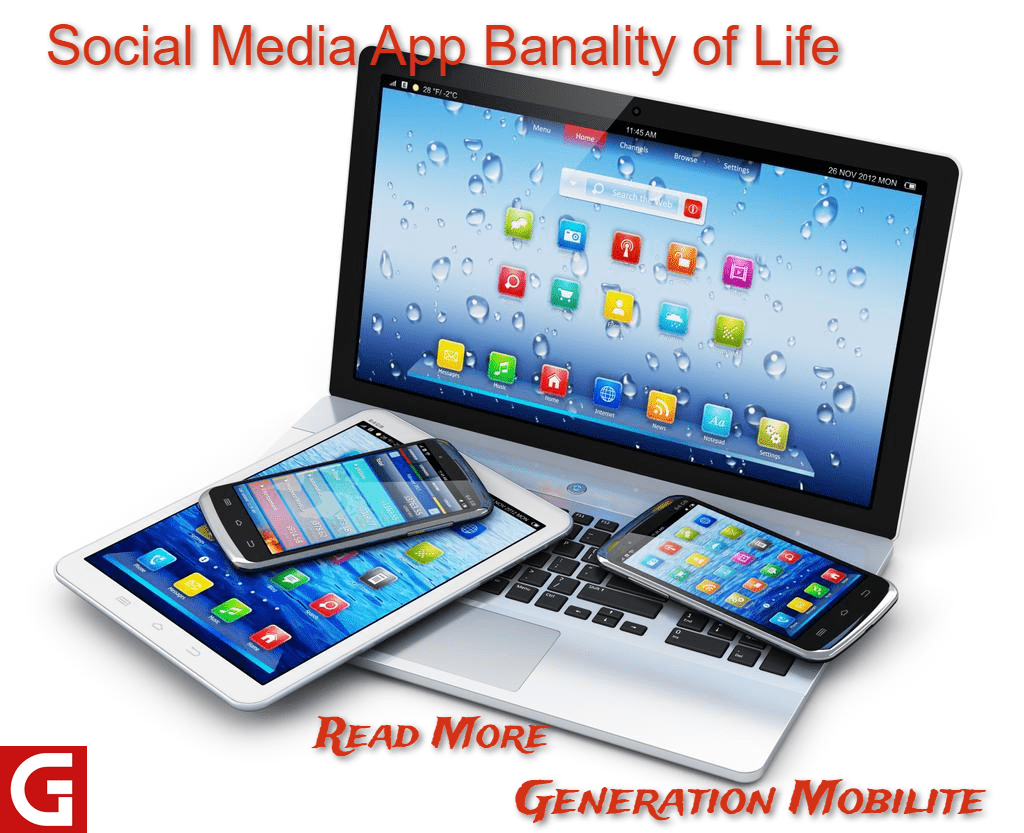Introduction
In recent years, a troubling phenomenon has emerged alongside the rise of social media app banality of life perpetuated through these apps and platforms. This refers to the repetitive, predictable content that dominates many social media feeds, lacking originality and depth.
Table of Contents
The term “banality of life” evokes the mundane, superficial nature of such content. At first glance, this constant stream of mundane posts may seem harmless. However, continual exposure to this tailored, curated banality shapes our perceptions and mental health in subtle but significant ways.
In this comprehensive essay, I will provide an in-depth look at the characteristics and root causes of social media banality. We will explore its psychological impact on self-image, relationships, and well-being. Finally, I will suggest strategies to mitigate its harmful effects and envision a future where technology elevates our lives.
Defining the Banality Phenomenon on Social Media

The concept of banality on social media encompasses a few key aspects:
Repetitive and predictable content – Endless streams of similar selfies, food photos, influencer promotions, curated snapshots. Lacks diversity or originality.
Superficiality: Focus is on appearances, aesthetics and impression management rather than depth, vulnerability and reciprocity.
Idealized portrayals: Heavily filtered, exaggerated images depicting perfectionist standards for beauty, success, happiness, lifestyle.
Crafted narratives: Manicured captions, designed to entertain and impress others. Masks the complexity of real life.
Curated perfection: Emphasis on promoting achievements, materialism, ideal living conditions, travel and leisure.
Lack of authenticity: Users present aspirational versions of self and life. Little room for imperfection, struggles, unfiltered selves.
Together these characteristics encapsulate the formulaic, manufactured nature of content that dominates social media feeds. Behind the glossy facade, there is little authentic human connection and self-expression.
What Drives the Social Media Banality Cycle?

Various factors converge to fuel the banality cycle on social media apps and sites:
1. Comparison culture: Platforms are built to encourage constant comparison. Users compete for validation through likes and comments.
2. Influencer effect: Influencers fill feeds with unrealistic promotional content to maintain their brand. Their followers emulate their manicured aesthetic.
3. Performative culture: Users feel pressured to present an idealized life narrative to impress others. This performance becomes self-perpetuating.
4. Validation loop: Positive feedback in the form of likes and comments rewarding mundane posts keeps the loop going. Quantity trumps quality.
5. Algorithms: Platforms are designed to maximize user attention. Their algorithms amplify trendy,formatted posts and accounts.
6. Ad model: Revenue model prioritizes ads, promotions, influencers and aspirational content that garners user attention. Authenticity is sidelined.
7. Mimicry effect: Seeing repetitive, familiar content lowers the bar for users’ own posting habits. Mundane posts beget more of the same.
In summary, social media banality emerges from a mix of psychological, cultural and design factors that prize superficial engagement over meaningful content.
Psychological Impact of Exposure to Social Media Banality
The cumulative effect of constant exposure to a manicured, performative version of reality takes a toll on our mental health:
Self-perception
- Triggers comparison: Our self-worth is benchmarked against exaggerated, filtered depictions of achievement. This invites negative social comparison.
- Lowers self-esteem: When we fall short of carefully curated standards we see online, we view ourselves as inadequate.
- Induces perfectionism: Exposure to flawless photos and narratives pressures us to meet impossibly high standards in our own lives.
- Reduces self-awareness: Our identity becomes defined by online milestones and external validation rather than inner growth.
Mood and outlook
- Heightens anxiety and depression: The pressure to conform and perform exacts a psychological cost. The comparison cycle is unrelenting.
- Fuels FOMO : Seeing idealized snapshots of others’ activities makes us feel excluded.
- Distorts aspirations: Social media depictions warp our understanding of what makes for a fulfilling, meaningful life.
- Promotes escapism: The perfectly crafted alternate realities provide an addictive escape from real life and its complexities.
Relationships and connection
Impedes vulnerability: There is little space for imperfections, insecurities and unfiltered expression in the polished banality loop.
Hinders intimacy: Relationships lack emotional honesty, reciprocity and depth.
Isolation: Despite having more online “friends” we feel lonely and disconnected from others.
Transactional communication: Interactions become focused on gaining validation through comments and likes rather than mutual understanding.
In essence, social media banality sets up a false dichotomy where our lived reality always falls short in comparison. This breeds discontentment, anxiety and emotional disconnection.
Ways to Break Free From the Banality Bubble
The pervasive banality characteristic of social media creates a filtered bubble that distorts our self-perception and interactions. Here are some tips to prevent it from clouding our digital lives:
Regulate usage
Set limits on daily social media use to reduce passive scrolling. This minimizes meaningless comparison and envy triggers.
Disable notifications to avoid impulsive checking. Choose intentional access.
Take periodic social media fasts – 1 week off every 2-3 months. Provides perspective.
Curate consciously
Prune feeds to focus on accounts that inspire and inform rather than trigger comparison.
Diversify follows – Seek lesser-known accounts that provide perspective outside the banality mold.
Foster mindful habits
Review posts through the lens of values vs validation. Does it enrich others?
Share content that represents your authentic thoughts and experiences. Avoid manufactured perfectionism.
Disable in-app photo editing. Appreciate rawness and imperfections.
Enrich real-world connections
Give primacy to in-person interactions and shared activities that nurture emotional bonds.
Open up about vulnerabilities, insecurities, fears. Practice mutual support.
By becoming mindful curators of our digital spaces, we can reshape social media into a tool for authentic self-expression and human connection.
Rethinking Social Media Design
Thus far we have focused on steps individual users can take to transcend the banality trap. However, addressing this issue comprehensively also requires the platforms themselves to prioritize user well-being over profits:
- Provide tools for users to set time limits, monitor usage, disable notifications and remove triggers from feeds.
- Highlightaccounts and posts based on depth of content rather than popularity or influencer status.
- Incorporate well-being checks and prompts for more mindful usage.
- Establish an ethics-based design framework that optimizes for fulfillment rather than addiction.
- Rely less on targeted ads and influencer content that fuels social comparison.
- Share revenue with creators providing enriching content. Incentivize authenticity.
Essentially, social media companies need to transition from an engagement-based to a fulfillment-based ethos. This shifts the operating metric from time spent to subjective well-being, with technology designed to uplift users.
Envisioning a Social Media Future Beyond Banality
Taking a long-term view, I believe we are at the cusp of a paradigm shift in how social media platforms operate:
- Public pressurewill compel companies to provide health-promoting alternatives to current engagement-driven sites.
- Ethical design practices will be codified into industry standards, regulationsand product design methodologies.
- Users will migrate to platforms offering greater authenticity, user empowerment and community.
- Value-driven social enterprises will create community-owned platforms fostering transparency and democracy.
- Integrating AI will allow highly customized feeds curated to user values and well-being.
- AR and VR spaces will emerge where users can interact in meaningful virtual settings and activities.
- The economics of platform revenue will need to change to support genuine human connection over advertising profits.
The endpoint of this evolution is social media that enriches lives by connecting kindred spirits, inspiring growth and catalyzing real-world action. Amidst the banality, our human need for authenticity, meaning and purpose will prevail.
Conclusion
This comprehensive analysis illuminates how social media banality impoverishes our connections and self-image. However, armed with self-awareness and right use, we can utilize these powerful tools to express our authentic selves and strengthen bonds.
Our digital spaces should nourish our humanity, not erode it under the facade of the mundane. Mindful technology and design offer the path to an uplifting and fulfilling social media future.


